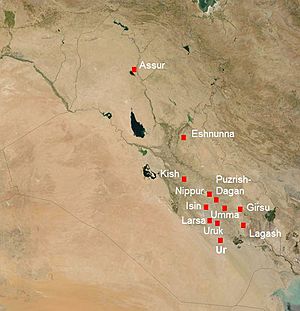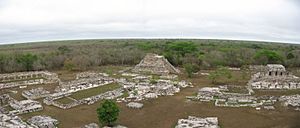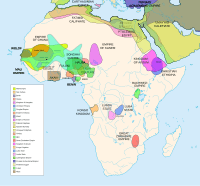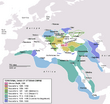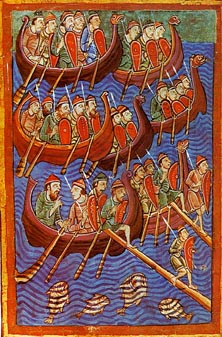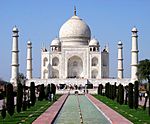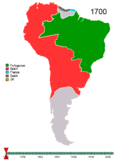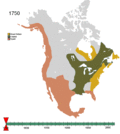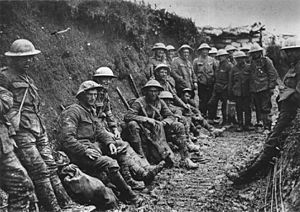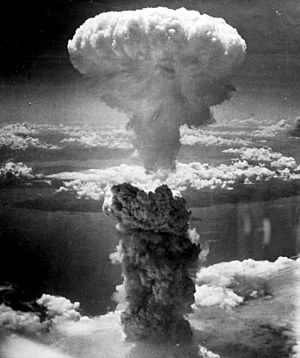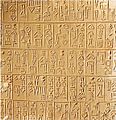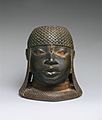History of the world facts for kids
The history of the world is the story of humans and their achievements. It covers everything from the very first humans to the end of the 20th century. It does not include the history of Earth before humans appeared.
Contents
- How Humans Developed
- How Climate Affected People
- Prehistory: Before Writing
- Ancient History: Early Civilizations
- New Beginnings and Changes
- Related pages
- Images for kids
How Humans Developed
Modern humans are called Homo sapiens, which means 'wise man'. We have been around for about 250,000 years. Before us, there were other types of humans. These included Homo erectus ('standing man') and Homo neanderthalensis ('man from Neanderthal').
Scientists believe that humans slowly changed from earlier human-like creatures. This idea is called human evolution. Most biologists think Homo sapiens first appeared in Africa. From there, they spread across the world. They eventually replaced other human types like Neanderthals in Europe and Homo erectus in Asia.
Neanderthal Man got his name because a skull was found in the Neanderthal Valley in 1856. This skull was different from a modern human skull. Other Neanderthal skeletons have been found since then. Neanderthals lived before modern humans. They knew how to use tools and fire. When old stone tools are found, their style often shows if they were made by Homo sapiens or Neanderthals. By the end of the Stone Age, Homo sapiens were the only type of humans left.
How Climate Affected People
Climate greatly affects how humans live. Different parts of the world have different climates. Some places are hot all year, others are cold. Some are dry, and some are wet. Most places have warm summers and cool winters. Rain also comes at different times of the year. All these things change how people live.
Climate also affects the types of food people can find or grow. Everywhere humans live, there is a main food that most people eat. This is called a staple food. It is usually a grain or vegetable that is easy to grow. Examples include wheat, maize, rice, potatoes, and beans. Climate also affects what animals can be found or farmed. This changes the types of meat people eat. Climate also influences the kinds of buildings people make, the clothes they wear, and how they travel.
Climate Change Through History
The Earth's climate has not always been the same. There have been long periods that were warmer, and others that were colder. When it's colder, there is more ice at the poles. These cold periods are called ice ages. The Earth has had many ice ages. Two of them affected humans.
A big ice age happened from about 70,000 to 10,000 years ago. It changed how early humans lived. Another colder period, called the Little Ice Age, occurred from about 1600 AD to 1900 AD.
Prehistory: Before Writing
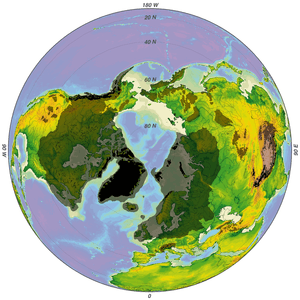
"Prehistory" means "before history." It is the long time before writing was invented. During this time, humans did not write down information about their lives. Prehistory is split into two main parts: the Paleolithic Age (Early Stone Age) and the Neolithic Age (Late Stone Age). The exact dates for these ages change depending on where people lived.
Prehistory ended at different times around the world. It depends on when written records appeared in a civilization. In Ancient Egypt, writing started around 3200 BC. In Australia, the first written records are from 1788. In New Guinea, they are from about 1900.
In the Paleolithic era, many different human types existed. But by the Neolithic era, only modern humans, Homo sapiens, were left.
The Paleolithic Era
The Paleolithic Era was the longest part of human history, lasting about 99% of it. It began about 2.6 million years ago. It ended around 10,000 BC. This age started when early humans (hominids) began using stones as tools. They used them for bashing, cutting, and scraping. The age ended when humans started planting crops and farming. In some colder places, like Western Europe, people started farming sooner because of the Ice age. Their culture is sometimes called the Mesolithic Era.
During the Paleolithic Era, humans lived in small groups. They survived by gathering plants and hunting wild animals. This is called a "hunter-gatherer society." Men likely did most of the hunting, while women gathered food. Hunted food included small animals like rabbits, birds, and herds of deer and cattle. Gathered foods included grains, root vegetables, fruit, seeds, berries, nuts, eggs, and insects.
Many Paleolithic groups were nomadic. They moved from place to place as the weather changed. They followed animal herds. If there was a drought or flood, they might travel far to find food. During the "Great Ice Age," much of the Earth's water was ice. The sea level was much lower. It is thought that people could walk from Siberia to Alaska. Even though much of the land was covered in ice, a strip of land led to what is now the United States. Groups of Homo sapiens traveled there from Asia. This area had rich grasslands and many large animals that are now extinct. These groups later spread to other parts of America as the climate changed.
Paleolithic people used stone tools. Sometimes it was just a useful rock. Other times, they broke rocks to make sharp edges. Later, they chipped rocks to make pointed shapes for spearheads or arrow tips. Some tools were carefully shaped and sharpened. They also used tools made of wood and bone. They probably used leather and plant fibers, but these have not lasted. Paleolithic people also knew how to make fire for warmth and cooking.
The Neolithic Era

The Neolithic era brought big changes to human society. People started to settle down and developed agriculture. They also began to tame animals. These changes took a very long time. Because of farming and tamed animals, people did not need to move around as much. Villages could grow much larger than before.
Over thousands of years, humans became more advanced in their thinking, fighting, and beliefs. Over time, villages grew and took control of larger areas. They developed into more advanced civilizations.
When humans started growing crops and taming animals like dogs, goats, sheep, and cattle, their society changed. Since they now grew crops and raised livestock, they built permanent settlements. In most places, this happened between 10,000 and 12,000 years ago. Their diet also changed. People ate more cereals and vegetables. They also began to store food for planting later. In some years, they had extra food that could be traded.
These changes happened in different parts of the world on their own. They did not always happen in the same order. For example, early farming societies in the Ancient Near East did not use pottery. But early Japanese societies used pottery before they started farming.
Vere Gordon Childe called this process the Neolithic Revolution in the 1920s. He thought it was as important as the Industrial Revolution that happened much later.
Ancient History: Early Civilizations
Ancient history covers the time from when writing began until the Roman Empire fell. The fall of the Roman Empire caused a lot of trouble in Europe. This led to the Middle Ages, sometimes called the Dark Ages.
Middle East and North Africa
Sumer: The First Civilization
Sumer was the world's first known ancient civilization. The Sumerians settled in the Fertile Crescent area of Mesopotamia around 3300 BCE. By 3000 BCE, many cities had been built in Sumer. These cities were separated by the land. They grew independently and each had its own government. They were called city-states and often fought each other.
Sumer grew crops near the Tigris and Euphrates rivers. Having extra food meant that some people could stop farming and do other jobs. This led to a split in society. People were grouped into social classes based on their wealth and power. This is like a social pyramid. At the top were the king, priests, and government officials. Below them were artisans, merchants, farmers, and fishers. At the bottom were slaves, often prisoners of war or people paying off debts.
In Sumer, only the sons of rich and powerful families learned to read and write. They went to a school called edubba. Only these boys could become scribes, who wrote things down.
The Sumerians created the world's first writing system, called cuneiform. Some of the oldest stories, like the Epic of Gilgamesh, come from this time. They also invented sun-dried bricks, the wheel, the ox plow, and were skilled at making pottery. They are also thought to have invented the sailboat.
Other civilizations at this time also grew along major rivers. These were called river valley civilizations. They were powerful because water was needed for farming. These civilizations were similar to Sumer because they:
- Developed along river systems.
- Had religions with many gods (polytheism).
- Used writing systems.
After Sumer, two other great civilizations rose in Mesopotamia: the Babylonians with King Hammurabi (famous for his laws, the Code of Hammurabi) and the Assyrians. To the east was the long-lasting civilization of Elam.
Ancient Egypt: Along the Nile
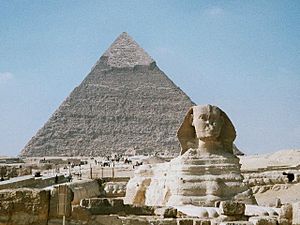
Ancient Egypt grew along the Nile river. It was most powerful around 2000 BC. At its largest, it stretched from the Nile delta to a mountain in Sudan. It began around 3500 BC and likely ended about 30 BC when the Roman Empire invaded.
Egyptian society relied on the Nile River. They used irrigation to grow crops in the Nile Valley. They are famous for writing in hieroglyphs, building the huge pyramids, other tombs, and big temples. They also had a strong military.
There was a big difference between social classes. Most people were farmers, but they did not own the food they grew. It belonged to the state, temple, or noble family who owned the land. There was slavery, but how it worked is not fully clear. The rulers used religion to make people respect them and their history.
The religion of Judaism started around 1500 BCE, influenced by Egyptian and Babylonian civilizations.
Mid and Eastern Asia
Ancient China: Dynasties and Philosophers
The first dynasty of Ancient China, the Shang Dynasty, began around 1500 BC. China started as city-states in the Yellow River valley. At the end of the Zhou Dynasty, great Chinese thinkers lived. These included Kong Fuzi, who started Confucianism, and Laozi, who started Daoism.
In 221 BC, the Qin emperor Qin Shi Huang created the first strong, central state in China. He based it on his ideas of legalism and made everyone write the same way. He was against Confucianism. He also started building an early version of the Great Wall. In 202 BC, the Han Dynasty took over. It became an empire as strong as the Roman Empire. Towards its end, Buddhism came to China from India.
Ancient India/Pakistan: Indus Valley to Empires
The Indus Valley civilization existed from about 2600 BC to 1900 BC. It was the start of city life on the subcontinent. It was centered on the Indus River. This civilization is known for its brick cities with drainage systems and multi-story houses.
The Maurya dynasty began in 321 BCE. For the first time, most of the Indian subcontinent was united under one government. Ashoka the Great first wanted to expand his kingdom. But after becoming a Buddhist, he followed a policy of ahimsa (non-violence). The Edicts of Ashoka are India's oldest preserved historical documents. Under Ashoka, Buddhist ideas spread across East Asia and Southeast Asia.
The Gupta dynasty ruled from around 320 to 550 AD. The Gupta Empire covered Central India and parts of modern Bangladesh. It did not include modern Pakistan. Gupta society followed Hindu beliefs. Historians see the Gupta dynasty, along with the Han Dynasty, Tang Dynasty, and Roman Empire, as a model of a classical civilization.
The Americas
Ancient Maya: City-States and Collapse
The Maya civilization began in Central America. They lived mainly on the Yucatán Peninsula in what is now Mexico, and also in Honduras, Belize, and Guatemala. They were the only known civilization in America before Columbus to have a fully developed written language. They also made great achievements in art and architecture. They had very advanced systems of mathematics and astronomy.
The Maya area was settled around 10,000 BC. The first Maya settlements were built around 1800 BC in the Soconusco region of Mexico. This was the Early Preclassic period. People began to settle down and grow livestock. They made pottery and small clay figures. They built simple burial mounds, which later became step pyramids. Other civilizations were nearby, like the Olmec and Zapotec. These cultures and the Maya likely influenced each other.
Like Ancient Greece, the Maya civilization was made of many independent city-states. Farming was important around cities like Tikal and Copán. The most important buildings were the pyramids they built for their religious centers and the palaces for their rulers. They also carved stone slabs called stelae. These showed rulers and texts about their family history, victories, and achievements.
Trade and Decline
The Maya traded over long distances. They traded with other Mesoamerican cultures like Teotihuacán and the Zapotec. They also traded with groups farther away. Archaeologists found gold from Panama in Chichen Itza. Important trade goods included cacao, salt, sea shells, jade, and obsidian.
In the 8th and 9th century, cities in the southern lowlands faced problems and declined. The Maya stopped making big monuments and inscriptions. Soon after, these cities were abandoned. Scientists are not sure why this happened. It might have been due to environmental factors or other reasons.
Post-Classical Period and Spanish Conquest
In the north, Maya development continued from the 10th to the 16th century. Outside influences became more noticeable. Important sites from this time include Chichen Itza, Uxmal, and Coba. Later, Mayapan ruled all of Yucatán until a revolt in 1450. The area then split into competing city-states until the Spanish conquered Yucatán.
The Spanish took longer to conquer the Maya than the Inca or Aztecs. This was because there was no single capital city. Conquering one city did not affect the whole empire much. The last Maya states were finally defeated in 1697.
The Maya people did not disappear. Today, about 6 million Maya still live. Some are well-integrated into modern society. Others continue to speak one of the Maya languages and keep their cultural heritage alive.
The Aztecs: Empire in Mexico
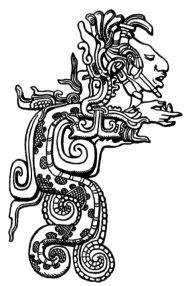
The Aztecs built an empire in Central America, mostly in Mexico. Their empire lasted from the 14th to the 16th century. They spoke the Nahuatl language. Their capital was Tenochtitlan, built on islands in a lake. Tenochtitlan was one of the world's largest cities at that time.
The Aztecs believed in many gods (polytheism). Quetzalcoatl (feathered snake), Huitzilopochtli (hummingbird of the south), and Tezcatlipoca (smoking mirror) were very important gods. Sometimes, the Aztecs performed human sacrifices to please their gods.
Between 1519 and 1521, the Spanish leader Hernán Cortés defeated the Aztecs. Some Aztecs did not want to fight Cortés's soldiers because they thought they were gods.
Today, many Mexicans have Aztec and other Native American ancestors. Aztec symbols are still used in Mexico. The Mexican flag shows an eagle on a cactus with a snake in its mouth, which was an Aztec symbol. The name Mexico is also an Aztec word.
The Aztecs ate many plants and vegetables that grew easily in Mexico. Their main food was corn, which they called maize. Another food they ate was squash.
The Aztecs had strict punishments for crimes. For example, wearing cotton clothes (only for nobles), cutting down a living tree, moving a field boundary, major theft, and treason could all be punished by death.
The Incas: Empire in the Andes
The Incas were a civilized empire in western South America. They are called a "pre-Columbian" empire, meaning they existed before Christopher Columbus arrived. They ruled parts of South America, around what is now Peru, for a little over 100 years. Then the Spanish invaded in the 16th century.
The Inca Empire, or Tawantinsuyo (meaning four regions in Quechua), lasted about 100 years. Their main language was Quechua, but since the Incas were made of many groups, there were likely many other languages.
Their capital was the city of Cusco, or Qosqo, in southern Peru.
Manco Cápac founded the first Inca state around 1200. It covered the area around Cusco. In the 1400s, Pachacuti began to include other people in the Andes. The Inca Empire started to expand. It became the largest empire in the Americas before Columbus.
In 1532, the civil war ended. The brothers Huáscar and Atahualpa fought to become the next ruler. During this time, Spanish conquerors, led by Francisco Pizarro, took over Inca land. In the following years, the conquistadors spread their power across the Andean region. They stopped Inca rebellions until the Viceroyalty of Perú was set up in 1542. The last Inca resistance fell in 1572. The Inca civilization ended then, but many cultural traditions remain in groups like the Quechuas and Aymara people.
Africa: Ancient Kingdoms and Empires
Ancient Egypt and Carthage are well-known civilizations of ancient Africa. For many parts of Sub-Saharan Africa, there are not many written records. This makes the history of Africa harder to write about. But new methods like recording oral history, studying historical linguistics, and archeology have improved our knowledge. This includes empires and kingdoms like Ethiopia, Ghana, Mali, Nubia, Kush, and Kerma.
New Beginnings and Changes
After the fall of Western Rome, the Germanic tribes who took over tried to learn from Roman civilization. But much was forgotten. Europe did not see many big achievements until the Renaissance. However, with the rise of Islam, many changes happened during the Islamic Golden Age. Greek and Roman traditions were kept and further developed. The Chinese civilization had a Golden Age during the Tang Dynasty, when its capital was the world's biggest city. During the Renaissance, Europe also developed greatly in many areas.
Asia
Middle East: Rise of Islam and Fall of Byzantium
In Arabia, Muhammad founded Islam in 632. His followers quickly conquered lands in Syria and Egypt. They soon became a direct threat to the Byzantine Empire, which was suffering from the Plague of Justinian. In the 8th and 9th centuries, the Byzantine Empire managed to stop Islamic expansion. They even won back some lost lands. By 1000 A.D., the Eastern Empire was at its strongest. Basil II reconquered Bulgaria and Armenia. Culture and trade thrived.
But this expansion stopped suddenly in 1071, at the Battle of Manzikert. This battle led to a big decline for the empire. The Byzantine Empire then faced several centuries of civil wars and Turkic invasions. The Muslim caliphate had a Golden Age under the Abbasid Caliphate.
Their power forced Emperor Alexius I Comnenus of the Byzantine Empire to ask the West for help in 1095. The West sent the Crusades. These eventually led to the Sack of Constantinople by the Fourth Crusade in 1204. What was left of the Empire broke into smaller states. The Empire of Nicaea became the strongest. After Constantinople was taken back by imperial forces, the empire was mostly a Greek state on the Aegean Sea coast. The Eastern Empire ended when Mehmed II conquered Constantinople on May 29, 1453. The Ottoman Empire took its place. From 1400 to 1600, it was the most powerful empire in the Middle East. It ruled the southern and eastern coasts of the Mediterranean Sea.
China: Tang and Ming Dynasties
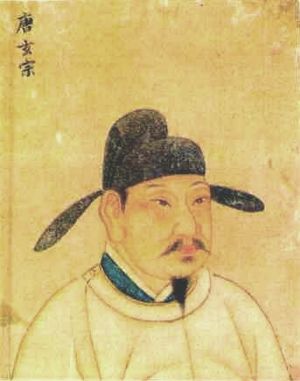
The Tang Dynasty (618–907), with its capital at Chang'an (today Xi'an), was the world's biggest city at the time. Historians see it as a high point in Chinese civilization and a golden age of diverse culture. The Ming Dynasty ruled from 1368 to 1644. The Ming built a huge army and navy.
India: From Chola to Mughal
From around the 6th–7th century, Chola kings ruled Tamil Nadu in South India, and Chera kings ruled Kerala. They traded with the Roman Empire to the west and Southeast Asia to the east. In North India, Rajputs ruled many kingdoms.
In 1336, two brothers, Harihara I and Bukka, founded the Vijayanagara Empire in what is now Karnataka, India. The most famous king of this empire was Krishnadevaraya. In 1565, the empire's rulers were defeated in a battle. But the empire continued for about another hundred years. Northern India was ruled by Islamic sultans.
Japan: Feudalism and Seclusion
The Heian Period in Japan is known for its art, poetry, and literature. The writing system, Kana, was developed. This was followed by the feudal period (1185–1853). During this time, samurai and daimyos were important figures. The shogun was the real ruler, while the tennō was mainly a religious leader. Between 1272 and 1281, the Mongols tried to invade but were driven out by the Japanese.
In 1542, a Portuguese ship reached Japan. The Japanese learned about guns and firearms from them.
Beginning in the early 17th century, the rulers (called the shogunate) started a policy of sakoku, or seclusion. They thought that traders and missionaries wanted to bring Japan under European control. Except for the Dutch and Chinese, all foreigners, traders, and missionaries were not allowed into Japan.
Even during this time, Japanese people continued to learn about other parts of the world. This policy of seclusion lasted about 200 years. It ended in 1868 with the Meiji Restoration, when the emperor took power again and started many reforms.
Mongols: A Vast Empire
Genghis Khan united the Mongol tribes in 1209. He founded the Mongol Empire, one of the largest land empires in history. Later, Kublai Khan expanded the empire and founded the Mongol-ruled Yuan dynasty in China. The empire later broke into several smaller empires, which were all eventually destroyed.
European Middle Ages
The Middle Ages lasted from the fall of the Roman Empire until the mid-15th century. From 500 to about 800 AD, there was some decline compared to Roman civilization. European villages were often destroyed and looted by groups like the Vikings. During the High Middle Ages, grand castles and large churches called cathedrals were built. Important books were also written. In the later Middle Ages, a terrible plague called the Black Death killed one-third to one-half of Europe's population.
A system called feudalism was very important during the Middle Ages. In this system, the king was at the top. The king gave land to lords in exchange for their loyalty. Lords were next in the pyramid. Lords gave land (called a fief) to knights for loyalty and protection. Knights were next. Peasants were not part of the feudal system because they did not give or receive land. They worked on a lord's manor in exchange for protection.
The Crusades were also fought during the Middle Ages. Some historians believe the Crusades, along with the Black Death, increased trade, and better farming technology, helped end the Middle Ages.
Renaissance: A Rebirth
The Renaissance started in Italy. Renaissance is a French word meaning "rebirth." During this time, people rediscovered and learned from the ancient Greek and Roman cultures that had been forgotten. Artists learned from classical paintings and sculptures. They rediscovered perspective and the art of realistic sculptures. Famous Renaissance artists include Leonardo da Vinci, Michelangelo, and Raphael. The Gutenberg printing press, invented by Johannes Gutenberg, was also developed then.
The Renaissance was also a time of great achievements in science (Galileo Galilei, Francis Bacon), philosophy (Thomas More), and literature (Dante Alighieri, William Shakespeare).
Globalization: Connecting the World
The Rise of Europe
Colonization: New Worlds, New Connections

Colonization began after Christopher Columbus arrived in the Americas. European countries like England, France, and Spain built colonies there. These settlers often fought the Native Americans to take their land. The colonization of the Americas marked the beginning of modern times.
An important event was the Columbian Exchange. This brought new foods, ideas, and diseases between the Old World (Europe, Asia, Africa) and the New World (the Americas). It changed how people lived everywhere. Historians believe almost everyone, even in Asia, was affected by it.
Reformation and Industrial Revolution
The Protestant Reformation began with Martin Luther. He protested against corruption in the Catholic Church. He believed Christians should read the Bible to understand God's will, meaning they did not need priests. This led to new Christian traditions like Lutheranism and Calvinism. The Counter-Reformation was the Catholic Church's response, founding new religious orders like the Jesuits and sending missionaries worldwide.
The Industrial Revolution started in Great Britain. It brought many new ways to produce goods. These advances allowed people to make much more than they needed. The early British Empire faced a split when its American colonies revolted to create a representative government.
From Nationalism to Imperialism
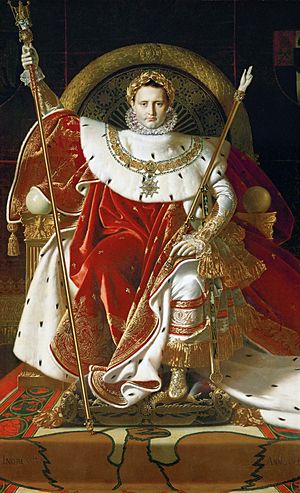
The French Revolution caused huge political changes in Europe. People, inspired by the Age of Enlightenment, demanded human rights with the slogan liberté, egalité, fraternité (liberty, equality, brotherhood). This led to the Declaration of the Rights of Man and of the Citizen, but also to periods of terror and the execution of King Louis XVI.
The French leader, Napoleon Bonaparte, conquered and changed Europe through wars until 1815. As more people gained the right to vote in France and the UK, socialist and trade union movements grew. Revolutions swept across Europe in 1848. The last parts of serfdom were ended in Austria-Hungary in 1848 and in Russia in 1861.
The Balkan nations began to gain independence from the Ottoman Empire. After the Franco-Prussian War, Italy and Germany became united in 1870 and 1871. Conflicts spread globally as countries sought to build empires. This search for power led to the start of World War I.
Asia: China, Japan, India
China: Qing Dynasty's Decline
From 1644 to 1912, the Qing dynasty or Manchu Dynasty ruled China. It was founded by the Manchu clan and expanded into China and its surrounding lands. Its military power weakened in the 1800s. Facing international pressure, huge rebellions, and war defeats, the Qing Dynasty declined after the mid-19th century. It was overthrown in 1912.
Japan: Seclusion and Modernization
During the Edo period, Japan had many small rulers called daimyo. The Tokugawa shogunate clan was the most powerful. They ruled from Edo (now Tokyo). For fifteen generations, they were the strongest clan in Japan.
From the early 17th century, the rulers (shogunate) started a policy of sakoku, or seclusion. They suspected that traders and missionaries wanted to bring Japan under European control. Except for the Dutch and Chinese, all foreigners were not allowed into Japan.
Even during this time, Japanese people continued to learn about other parts of the world. This policy lasted about 200 years. It ended in 1868 with the Meiji Restoration, when the emperor took power again and started many reforms.
India: Mughal Empire and British Rule
The Mughal Empire existed from 1526 to 1857. At its largest, it ruled most of the Indian subcontinent, then called Hindustan, and parts of what is now Afghanistan. It was founded by Babur in 1526. Its most important ruler was Akbar the Great (1556–1605). After the death of Aurangjeb (1658–1707), the Mughal Empire became weak. It continued until 1857. By then, India came under the British Raj.
America: Colonization and Independence
Spanish settlement began the European colonization of the Americas. This led to the genocide of many Native Americans. The Spanish took control of most of the Caribbean and conquered the Aztecs. They founded the Spanish Empire in the New World.
The first successful English settlements in North America were Jamestown (1607) and Plymouth (1620). The first French settlements were Port Royal (1604) and Quebec City (1608). The Fur trade soon became the main business, changing the Native Americans' way of life. Plantation slavery in the West Indies led to the start of the Atlantic slave trade.
Rivalry among European powers caused a series of wars in North America. The American Revolution led to the creation of the United States of America. Spain's control over its colonies weakened until they gained independence. The United States quickly expanded west. At the same time, the British built more in Canada.
Africa: European Influence Grows
During the 15th century, the Portuguese began exploring Africa. They built their first fort on the Guinea coast in 1482. They started the slave trade after Europeans discovered America in 1492, to provide workers for settlers there. Soon, English, Spanish, Dutch, French, and Danish sailors also built forts. But their influence inland was small (except for the impact of the slave trade) until larger colonies were founded in the 19th century.
The Twentieth Century and Beyond
The 20th century was a very important time in history. New technology and different ideas led to many worldwide changes in just 100 years.
World Wars: Global Conflicts
The First World War
World War I was fought from 1914 to 1918. At the time, it was called "The Great War" or "The War to End All Wars." Chemical poisons, tanks, aeroplanes, and bombs were used for the first time.
Four main reasons led to the war:
- Imperialism: Countries wanted to expand their empires.
- Nationalism: Strong feelings of loyalty to one's own nation.
- Alliances: Countries formed agreements to support each other.
- Militarism: Countries built up strong armies and navies.
These factors made war likely in Europe. The "spark" that started the war was the assassination of Archduke Franz Ferdinand of Austria-Hungary by Serbian nationalists. Austria-Hungary declared war on Serbia, and then their allies joined, leading to World War I.
Europe split into two groups: the Central Powers and the Allied Powers. The Central Powers were Germany, Austria-Hungary, the Ottoman Empire, and Bulgaria. The Allies were Britain, France, Russia, Italy, and the United States.
World War I was fought on two main fronts: the Eastern Front and the Western Front. Trench warfare was common on the Western Front.
Because of a British blockade, Germany used U-boats to sink British ships. After U-boats sank two ships with Americans on board, and the Zimmermann Telegram was revealed, the U.S. declared war on Germany, joining the Allies.
On November 11, 1918, Germany signed the armistice, meaning "the laying down of arms," to end the war. After the war, the Treaty of Versailles was written. Germany had to sign it and pay $33 million in reparations (payments for damage).
After the First War
After the war, the German Empire, Russian Empire, Ottoman Empire, and Austrian Empire ended. France and Britain became weaker.
The 1920s and 1930s saw military-focused fascist dictators take control in Italy, Germany, Japan, and Spain. They were helped by the Great Depression starting in 1929. When Adolf Hitler gained power in Germany in 1933, he prepared for World War II.
The Second World War
Of all wars, World War II involved the most countries and killed the most people. More than 60 million people died, making it the worst disaster ever. It lasted six years in Europe, from 1939 to 1945.
It was fought between the Axis Powers (Germany, Italy, and Japan) and the Allied Powers. At first, the Axis Powers were successful. But this ended in Europe with the Battle of Stalingrad in 1943 and the invasion in Normandy in 1944. Hitler continued his plan to kill nearly all Jews in Europe, known as the Holocaust.
In the Pacific, the war ended with the battles of Midway and Guadalcanal. Germany surrendered on May 8. The atomic bombs dropped on Hiroshima and Nagasaki led Japan to surrender on August 15, 1945.
After World War II: Cold War and Globalization
After World War II, the United Nations was founded. The hope was that it could solve arguments between nations and prevent wars. Communism spread to Central and Eastern Europe, Yugoslavia, Bulgaria, Romania, Albania, North Vietnam, and North Korea. In 1949, China became communist. During the 1950s and 1960s, many developing countries also became communist.
This led to the Cold War. This was a forty-year argument between the United States, the Soviet Union, and their allies (like members of NATO or the Warsaw Pact). Each side wanted to promote its type of government. The Soviet Union wanted to spread communism, and the United States wanted to spread democracy. People around the world feared a nuclear war because of the tension.
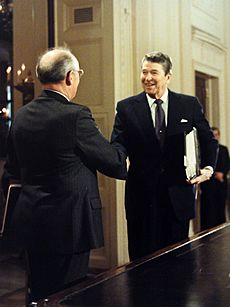
Communism became less popular when it became clear it could not bring economic growth as well as Western countries. Also, it did not allow freedom of speech for everyone. The Soviet Union stopped Hungary's reforms in 1956. It supported building the Berlin Wall in 1961. It also stopped reforms in Czechoslovakia in 1968.
When Mikhail Gorbachev made it clear in 1988/89 that he would not force Eastern Bloc countries to stay communist, the Berlin Wall was torn down in 1989. The Soviet Union collapsed in 1991. Then, the United States was the only superpower left.
After Mao Zedong's death, China's communist party showed that economic reform was possible without political freedom. This led to huge economic growth.
As the 20th century ended, the European Union began to grow. It included former communist states and even parts of the Soviet Union. Countries in Asia, Africa, and South America tried to copy the European Union.
The 20th century saw great progress in technology. People lived longer because of better medicine. New communications and transportation technologies connected the world. But these advances also caused problems for the environment.
The last half of the century saw the rise of the information age and globalization. These two things increased trade and cultural exchange. Space exploration expanded throughout the Solar System. The structure of DNA was discovered.
This period also raised questions about the future of human history due to global dangers like nuclear weapons and the greenhouse effect. As the 20th century ended and the 21st century began, people realized they needed to work together to deal with common dangers. Some scientists called this a "Planetary Phase of Civilization."
Related pages
Images for kids
-
World population, from 10000 BCE to 2000 CE, with projection to 2100 CE
-
Reconstruction of Lucy, the first Australopithecus afarensis skeleton found
-
Monumental Cuneiform inscription, Sumer, Mesopotamia, 26th century BCE
-
The Buddha
-
Persepolis, Achaemenid Empire, 6th century BCE
-
Pillar erected by India's Maurya Emperor Ashoka
-
Obelisk of Axum, Ethiopia
-
The Pantheon in Rome, Italy, originally a Roman temple, now a Catholic church
-
Hagia Sophia, in Istanbul, is among the most recognizable symbols of the Byzantine civilization.
-
Crusader Krak des Chevaliers, Syria
-
Notre-Dame de Paris in Paris, France: is among the most recognizable symbols of the civilization of Christendom.
-
A brass "Benin Bronze" from Nigeria
-
Chennakesava Temple, Belur, India
-
Battle during 1281 Mongol invasion of Japan
-
Angkor Wat temple, Cambodia, early 12th century
-
Gutenberg Bible, ca. 1450, produced using movable type
-
1570 world map, showing Europeans' discoveries
-
Hagia Sophia, Istanbul (formerly Constantinople), Turkey
-
Ming dynasty section, Great Wall of China
-
James Watt's steam engine powered the Industrial Revolution.
-
Empires of the world in 1898
-
The first airplane, the Wright Flyer, flew on December 17, 1903.
-
Last Moon landing: Apollo 17 (1972)





